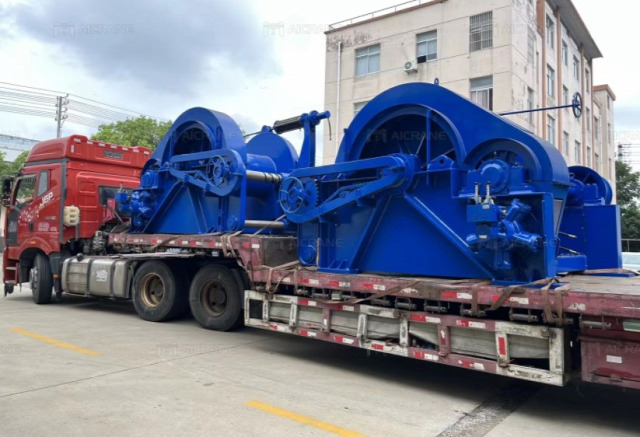Designing a 30-ton winch requires careful consideration of several factors. Here are some of the key design considerations:
Load Capacity: The winch must be capable of lifting and pulling loads up to 30 tons. This requires a heavy-duty design that can withstand the weight of the load and the forces generated during operation.

Power Source: The winch 30 ton can be powered by a hydraulic, electric, or pneumatic system. The power source must be capable of delivering sufficient power to lift and pull the load, and it should be reliable and durable.
Cable or Rope: The winch cable or rope must be strong enough to withstand the load and forces generated during operation. It should also be durable and able to resist abrasion and corrosion.
Safety Features: Safety features like overload protection, emergency stop, and automatic braking are essential to prevent accidents and protect personnel and equipment.
Mounting: The winch must be mounted securely to a stable surface that can handle the weight and forces generated during operation.
Environment: The winch must be designed to operate in the intended environment, whether it's indoors, outdoors, in extreme temperatures, or in hazardous conditions.
Maintenance: The winch must be designed for easy maintenance and repair to minimize downtime and ensure optimal performance.
Cost: The cost of the winch is an important consideration, and the design must balance performance, safety, and durability with cost-effectiveness.
How Can I Buy the Right 30 Ton Winch Machine
Buying the right 30-ton winch machine can be a daunting task, but here are some key steps you can follow to make the process easier:
Determine Your Needs: The first step in buying a 30-ton winch is to determine your needs. What kind of load will you be lifting and pulling? What are the environmental conditions of your workspace? What type of power source do you have available? These factors will help you determine the right winch for your needs.
Research Your Options: Once you have determined your needs, research the available options in the market. Look for manufacturers who specialize in winches and have a good reputation for quality and reliability. Read reviews and check the specifications to compare different models.
Check the Load Capacity: Make sure the winch you choose has a load capacity of at least 30 tons. You don't want to risk overloading the winch and causing damage or accidents.
Consider the Power Source: Choose a winch that is compatible with your power source. Hydraulic winches are typically more powerful and durable, but electric winches are more convenient and easy to use.
Look for Safety Features: Check if the winch has safety features like overload protection, emergency stop, and automatic braking. These features are essential to prevent accidents and protect personnel and equipment.
Check for Mounting Options: Make sure the winch is compatible with your mounting options. Some winches can be mounted on a trailer, while others need to be fixed to a stationary surface.
Look for Warranty and Support: Look for a manufacturer that offers a warranty and good customer support. This will give you peace of mind and ensure that you can get help if you encounter any issues with your winch.
Consider Your Budget: Finally, consider your budget when buying a winch. Choose a winch that is within your budget but still meets your needs for performance and safety.
By following these steps, you can choose the right 30-ton winch machine for your needs and budget.

